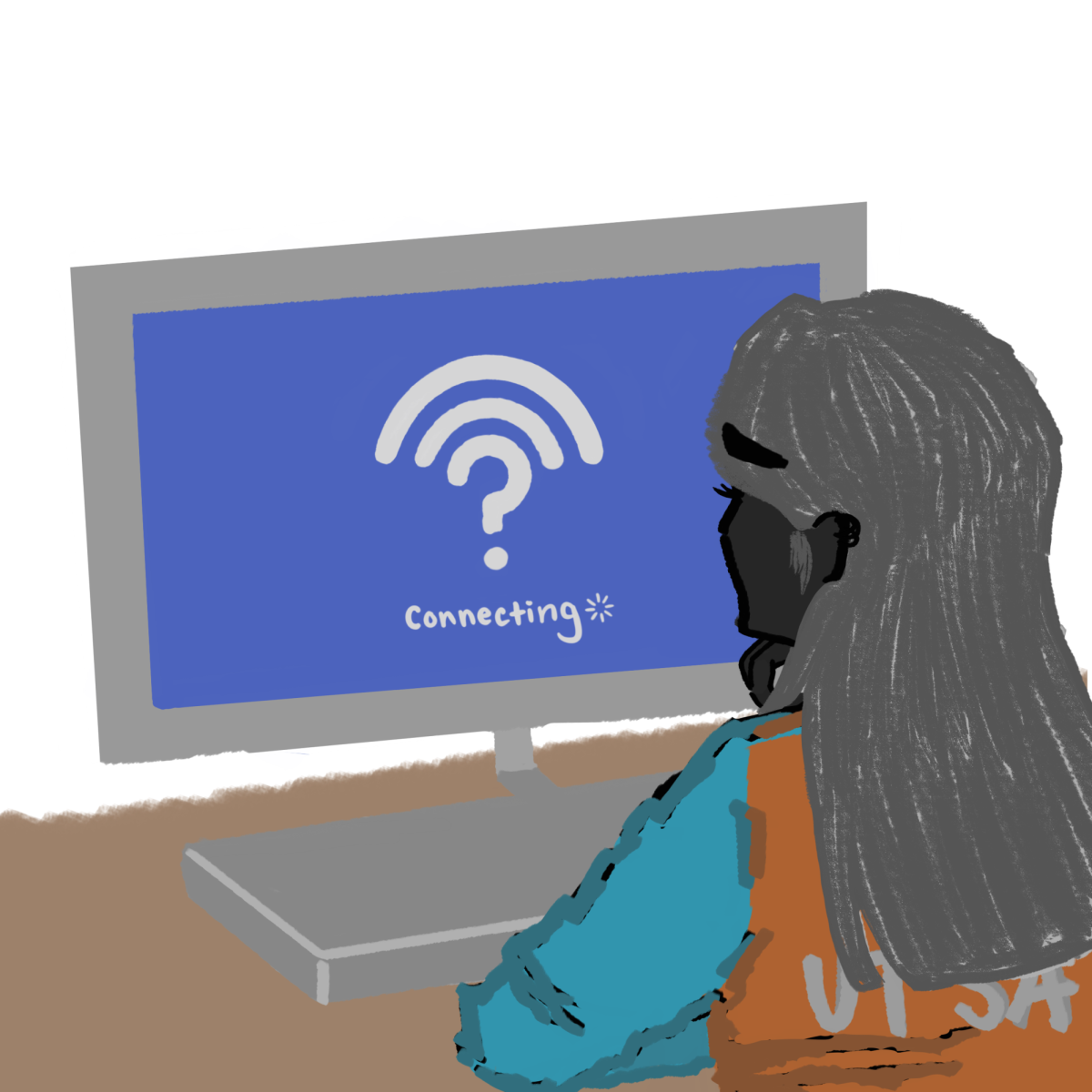Upon returning to campus, UTSA students and faculty experienced a modified login process for the new on-campus Wi-Fi, AirRowdy. Shutdowns of the old “AirRowdy_Student,” “AirRowdy_Guest” and “AirRowdy_FacultyStaff” happened over winter break, with the University Technology Solutions (UTS) team combining both into one network.
UTSA’s steady rise in student population, including a record-breaking freshman class last fall, has caused the old network to reach its maximum number of devices, with some days exceeding a total of 25,000. This has pushed the university to pursue a multi-year network upgrade where UTS will introduce new equipment to the old infrastructure.
“We will continue to make investments across our campuses to handle the growth and demand for new coverage areas to ensure a seamless wireless experience for our university community,” Kendra Ketchem, UTSA’s vice president for information management and technology, said.
Network hardware typically lasts five to seven years before it needs to be replaced. UTS has been upgrading equipment in smaller projects since the start of COVID in 2020, when the focus was to add access points into parking lots and garages to promote social distancing.
This past winter break, UTS improved the network’s capacity, allowing it to authenticate and support a greater number of devices than it has in the past.
“So far this semester [AirRowdy] has been good, but last semester [AirRowdy_Student] was terrible,” Francisco Martinez, a kinesiology major, said.
“Last semester I for sure had a ton of issues with [AirRowdy_Student], but this semester [AirRowdy] has been pretty decent so far,” Eric Darr, a business major, said.
“So far, so good,” Anita Bajwa, an anthropology major, said.
Kim Kline, a communication professor, chimed in as well to praise the new upgrade by saying, “I haven’t had any problems this semester.”
UTS is planning to assess the Main Campus’ Wi-Fi network service coverage at the end of January to identify the high-traffic areas that need an improved connection. Other upgrades are also planned, such as adding more access points around campus to allow for better Wi-Fi coverage in areas where service should be faster.
“It changes so much around campus,” Steve Kosiba, professor of anthropology, said when asked about the unreliability of the network, “Outside [AirRowdy] is not so great.”
Some students have also expressed their frustrations with the new network, even after the upgrade.
“I use ‘AirRowdy_Guest’ because it is more reliable and easier to connect to,” Marlene Beasley, a communications major, said.
“I have to use my hotspot continuously throughout my classes on campus due to the unreliability of the school’s Wi-Fi,” Alessia Valdez, a biology major, said.
“I can’t log into [AirRowdy] on my phone,” Ellie Lemm, a communications major, said.
According to the UTS TechCafe, UTSA is enhancing network connectivity across campuses through several initiatives, including replacing older wireless access points, testing connectivity throughout campus and increasing bandwidth to accommodate growth in the number of users and devices connecting to the network. Additional upgrades will encompass the replacement of equipment in 60 buildings across UTSA campuses. When the project is complete, UTSA students, faculty and staff can expect a more seamless experience connecting to the Wi-Fi.
The TechCafe is in place to assist students with technical needs, including helping with network connections and troubleshooting.
Julio Brindis, a communications major, talked about his experience with the Tech Cafe, which helped him get connected to AirRowdy. “I had issues connecting to [AirRowdy] at the very start. I had to go to the Tech Cafe to get signed in.”
If you are experiencing Wi-Fi connection issues, please call the Tech Cafe at (210) 458-5555 or email techcafe@utsa.edu.







